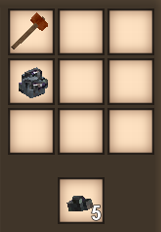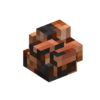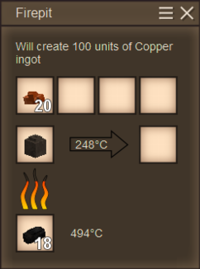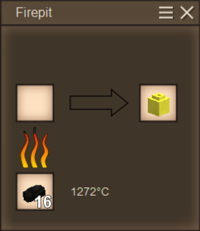Odlewnictwo

Ta strona jest nieaktualna.
Zawartość obecnej strony jest przestarzała w stosunku do najnowszej aktualizacji gry. Jeśli chcesz wspomóc, poproś o dostęp do edycji strony na Discordzie projektu.
Metalurgia jest procesem przetapiania rudy w stan ciekły i szybkiego formowania jej w przydatne głowice i sztabki. Nie jest to najważniejszy aspekt metalurgii, lecz jedna z pierwszych bram, dzięki którym seraph może wykuć sobie drogę do postępu i przetrwania.
Potrzebne materiały
Aby przetopić metal, gracz potrzebuje tygiel, formę, ognisko, Paliwo (drewno opałowe, torf, węgiel kamienny, węgiel drzewny lub koks) oraz samorodki. Gracz może również użyć kawałków metalu jako alternatywnego źródła metalu, otrzymując je poprzez połączenie głowni narzędzia lub sztabki z dłutem w siatce wytwarzania.
Większość samorodków można wrzucić do tygla i w ten sposób je przetapiać. Żelazo, Meteorytowe żelazo, staliwo i stal należy przetapiać w dymarce, wykuć na kowadle lub nawęglić z powodu wysokich progów temperaturowych i braku odpowiedniego paliwa, które osiągnęłoby tą temperaturę.
Pozyskiwanie metalu
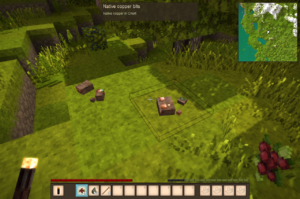
Samorodki można znaleźć na 4 sposoby: poprzez opłukiwanie piasku, w pękniętych naczyniach, kupując je bezpośrednio od handlarza lub zbierając kawałki metalu z powierzchni ziemi.
- Płukanie piasku, żwiru lub kościstej ziemi daje 15% szansy lub mniej na znalezienie samorodków miedzi, złota, srebra lub cyny.
- Spękane naczynia z rudą zawierają małą ilość bizmutu, chromu, miedzi, złota, ołowiu, srebra, cyny, tytanu i cynku; Te naczynia mogą być znalezione na powierzchni oraz pod ziemią w ruinach lub sprzedawane przez Poszukiwacza Przygód.
- Handlarz różności może posiadać samorodki bizmutu, miedzi, cyny i cynku, którymi aktualnie obraca w handlu.
- Samorodki, które występują na powierzchni ziemi mogą być znalezione w większości typów skał, z wyjątkiem boksytu, halitu, obsydianu, skori, suevitu i tufu wulkanicznego. Pojedyncze samorodki występują w formie małego kamienia z widocznym metalem, moga one zostać zebrane poprzez zniszczenie tego kamienia pustymi rękami bądź z przedmiotem w reku lub zebranie prawym przyciskiem myszy mając aktywne, puste miejsce na pasku przedmiotów. Takie małe skupiska metalu są wyznacznikiem większych podziemnych złóż.
- W zalezności od rudy i skały, mogą wtapiać się w otoczenie i być bardzo łatwo przeoczone.
- Skała suevitu nawet nie posiadając żadnego samorodka, samą obecnością zwiastuje pobliski metoryt zawierający być może meteorytowe żelazo.
Poleca się dodawanie znaczników na mapie w miejscu znalezienia konkretnego typu metalu. Jest to przydatne rozwiązanie zwłaszcza w związku z przepełnionym ekwipunkiem lub brakiem aktualnego zapotrzebowania na ten konkretny surowiec.
Alternatywnym źródłem metalu są też metalowe kawałki, które można pozyskać poprzez użycie dłuta z każdą metalową głownią narzędzia lub sztabką w siatce wytwarzania. Pozwala to na rozebranie metalowych przedmiotów i przetopienie ich w innym celu.
Przygotowywanie metalu
Luźne samorodki są od razu gotowe do przetapiania i nie wymagają dodatkowych przygotowań, jednakże te które są ukryte w skałach zwykłych i skrystalizowanych kawałków rudy takich jak bazalt, czy kimberlit, są bezużyteczne dopóki się ich nie przetworzy. Takie kawałki wystarczy połączyć w siatce wytwarzania z każdym tierem młota. Spowoduje to rozkruszenie skały i wydobycie znajdujących się w niej samorodków.
Istnieją cztery stopnie nasycenia skały rudą metalu - ubogie, średnie, bogate i bardzo bogate.
- Ubogie kawałki rudy są najbardziej powszechnymi kawałkami, które można znaleźć w każdym rodzaju skały. Ubogi kawałek rudy zawiera 3 samorodki metalu, a ubogi skrystalizowany kawałek rudy zawiera 6 samorodków metalu.
- Średnie kawałki tak samo jak ubogie, można znaleźć w każdym rodzaju skały. Średnie kawałki rudy zawierają 4 samorodki, a średni skrystalizowany kawałek zawiera ich 8.
- Bogate kawałki rudy są rzadkie i można je znaleźć w bardziej ograniczonym zakresie skał. Bogaty kawałek rudy zawiera 5 samorodków metalu, a bogaty skrystalizowany kawałek zawiera ich 10.
- Bardzo bogate kawałki są również rzadkie w znalezieniu. Nawet jeśli znajdzie się je w odpowiednich skałach, bardziej prawdopodobnym jest znalezienie większych ilości bogatych kawałków niż bardzo bogatych. Bardzo bogaty kawałek zawiera 7 samorodków, a bardzo bogaty skrystalizowany kawałek zawiera 14.
Przetapianie metalu
Pierwszy krokiem w obróbce metalu jest wytapianie, które jest wykonywane w tyglu. Pojedynczy tygiel jest w stanie pomieścić 4 całe stosy 128 samorodków, jednakże wtedy tylko jeden rodzaj metalu może być przetapiany. Każdy samorodek jest przeliczany na 5 jednostek metalu, co oznacza, że pełen tygiel jest w stanie pomieścić 2560 jednostek. Większość narzędzi i sztabek wymaga 100 jednostek (20 samorodków) na jedną formę, z wyjątkiem kilku większych przedmiotów, takich jak płyty, kowadła i metalowe bloki, które mogą wymagać znacznie więcej.
Forma nie zostanie w pełni utworzona, jeżeli nie dostarczymy odpowiedniej ilości jednostek.
Wytapianie z jednego rodzaju metalu jest bardzo proste, ponieważ ciągle używany jest ten sam. Tworzenie stopów jest trochę bardziej skomplikowane, ponieważ współczynnik jednostek metalów dla każdego stopu się różni, wymaga to doboru odpowiedniej ilości samorodków, aby w ogóle stop zaczął się tworzyć w tyglu.
Ilość samorodków użytych do stworzenia stopów może się różnić, co jest dużą przewagą, jeżeli nie posiadamy dużych ilości któregoś z wymaganych metali. Na przykład, stop brązu bizmutowego wymaga 10-20% bizmutu, 50-70% miedzi i 20-30% cynku lub w samorodkach, 2-4 samorodki bizmutu, 10-14 samorodków miedzi i 4-6 samorodków cynku.
If more zinc is available, a ratio of 2 bismuth nuggets, 12 copper nuggets, and 6 zinc nuggets can suffice, and vice versa, if more bismuth is available, a ratio of 4 bismuth nuggets, 12 copper nuggets, and 4 zinc nuggets is acceptable.
Preparing the crucible
- Place the crucible in the input slot (left) of the firepit to access the crucible GUI
- Add nuggets into one or more of the four input slots of the crucible GUI.
- When a proper alloy ratio has been reached, the GUI will display the amount in metal units and either the pure metal or alloy that will be produced from the smelting process.
- Add fuel and light the fire pit. Selecting the appropriate fuel is paramount to raising and maintaining the temperature of the metal above its particular smelting temperature, which liquifies the nuggets.
- When the nuggets have been fully liquified, the glowing crucible will shift to the output slot (right) of the firepit. The crucible will begin to cool down if it remains in the output slot or is otherwise pulled away from the heat, and if the crucible cools down far enough without being casted, the liquefied metal will be rendered solid and be otherwise unusable until heated up again.
Adding or removing ores after the process has begun will reset the temperature.
Casting metal
Once smelted, liquified metal is available within a crucible, it is ready to be cast within ingot or tool molds.
Filling molds
- Place the required mold to be filled on a solid surface. Tool molds occupy one block while ingot molds may be placed two to a block.
- With the glowing crucible in an empty hand (active hotbar slot) and a pair of tongs in your off-hand, select the desired mold with the display crosshairs and pour the liquid metal into that mold.
- When the mold is filled, metal will no longer be allowed to be added into the mold.
- The metal will reach various states of cooling in the mold- from liquid to soft to hardened to cold - which can be identified with the current item temperature in the mold GUI.
- When the tool or ingot is hardened or completely cold, it can be removed from the mold.
If a mold is picked up before the metal is hardened or cold, the soft or liquid material will be lost. Subsequently, a partially filled mold cannot be picked up, even if the metal is cold, because there are no assets available for metals that are too small to be fully cast and utilized.
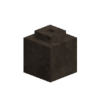
|
Protip:
Liquid metal of two different types cannot be added to a mold to get an alloy. Pure metals and alloys must be heated and liquified within the crucible before being poured. |
Mold availability
| Mold | Mold Type | Tool Type | Uses |
|---|---|---|---|
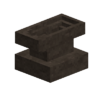
|
Anvil | Crafting | Manual and mechanized smithing. |
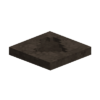
|
Topór | Harvesting | Chopping leaf, plant, and wood blocks, including trees, logs, planks, fences, gates, and other wooden building components; creates firewood. |
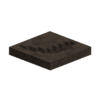
|
Falx | Combat | Mob damage, melee combat weapon. |
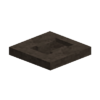
|
Hammer | Crafting | Crushing ores, crystal clusters, and certain soft stones; crafting components for mechanical power, item transportation, and steel carburization; polishing stone; cutting stone brick. |
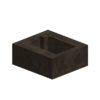
|
Helvehammer | Crafting | Mechanized smithing. |
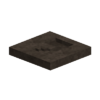
|
Hoe | Crafting | Tilling and converting soil for farming. |
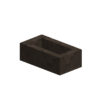
|
Ingots | Crafting | Ingot distribution, which can be used for manual and mechanized smithing and crafting components. |
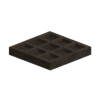
|
lamellar armor | Combat | Creating and repairing body lamellar armor. |
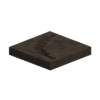
|
Pickaxe | Harvesting | Mining ceramic, rock, stone, ore, metal, and ice blocks. |
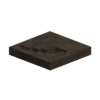
|
Prospecting Pick | Harvesting | Damaging rock blocks for long and short range ore and mineral detection. |
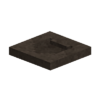
|
Shovel | Harvesting | Digging clay, gravel, peat, sand, soil, and snow blocks. |
Metal Types
There are 27 types of metal available for collection and usage, 14 castable metals and 13 uncastable metals. Of those castable metals, 6 are tiered, or tied to progression through the metallurgic ages, and 8 are untiered, which while useful, do not contribute to any advancement on their own merits.
Castable Metals
| Ingot | Nugget | Bits | Metal | Geologic Name | Metal Type | Tier | Alloy% | % Conversion in nuggets |
Smelting Temperature | Casting Uses |
|---|---|---|---|---|---|---|---|---|---|---|
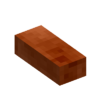
|
 
|

|
Miedź | Native copper Malachite |
Pure | 2 | ❌ | ❌ | 1084°C | Armor, ingots, tools, weapons, nails and strips |
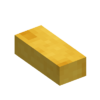
|

|

|
Gold | Native gold | Pure | 2 | ❌ | ❌ | 1063°C | Armor, ingots, tools, weapons, nails and strips |
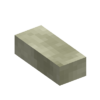
|

|

|
Silver | Native silver | Pure | 2 | ❌ | ❌ | 961°C | Armor, ingots, tools, weapons, nails and strips |
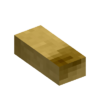
|
❌ | 
|
Brąz | ❌ | Alloy | 3 | Copper: 88 - 92% Tin: 8 - 12% |
Copper: 18 Tin: 2 |
950°C | Armor, ingots, tools, weapons, nails and strips |
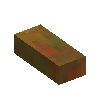
|
❌ | 
|
Brąz | ❌ | Alloy | 3 | Bismuth: 10 - 20% Copper: 50 - 70% Zinc: 20 - 30% |
Bismuth: 2 - 4 Copper: 10 - 14 Zinc: 4 - 6 |
850°C | Armor, ingots, tools, weapons, nails and strips |
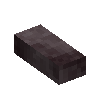
|
❌ | 
|
Brąz | ❌ | Alloy | 3 | Copper: 68 - 84% Gold: 8 -16% Silver: 8 -16% |
Copper: 16 Gold: 2 Silver: 2 |
1020°C | Armor, ingots, tools, weapons, nails and strips |
| Ingot | Nugget | Bits | Metal | Geologic Name | Metal Type | Tier | Alloy% | % Conversion in nuggets |
Smelting Temperature | Casting Uses |
|---|---|---|---|---|---|---|---|---|---|---|
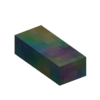
|

|

|
Bismuth | Bismuthinite | Pure | ❌ | ❌ | ❌ | 271°C | Ingots |
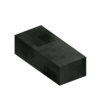
|

|

|
Lead | Galena | Pure | ❌ | ❌ | ❌ | 327°C | Ingots, leaded glass panes |
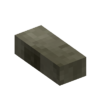
|

|

|
Tin | Cassiterite | Pure | ❌ | ❌ | ❌ | 232°C | Ingots |
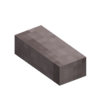
|

|

|
Zinc | Sphalerite | Pure | ❌ | ❌ | ❌ | 419°C | Ingots |
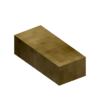
|
❌ | 
|
Brass | ❌ | Alloy | ❌ | Copper: 60 - 70% Zinc: 30 - 40% |
Copper: 12 - 14 Zinc: 6 - 8 |
327°C | Ingots |
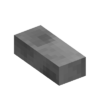
|
❌ | 
|
Alcohol_brewing#Solderbars | ❌ | Alloy | ❌ | Lead: 45 - 55% Tin: 45 - 55% |
Lead: 9 - 11 Tin: 9 - 11 |
327 °C | Alcohol distillation, ingots |
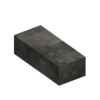
|
❌ | 
|
Molybdochalkos | ❌ | Alloy | ❌ | Copper: 8 - 12% Lead: 88 - 92% |
Copper: 2 Lead: 18 |
902 °C | Ingots |
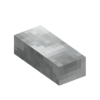
|
❌ | 
|
Alcohol_brewing#Solderbars | ❌ | Alloy | ❌ | Silver: 40 - 50% Tin: 50 - 60% |
Silver: 8 - 10 Tin: 10 - 12 |
758 °C | Alcohol distillation, ingots |
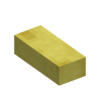
|
❌ | 
|
Electrum | ❌ | Alloy | ❌ | Gold: 40 - 60% Silver: 40 - 60% |
Gold: 8 - 12 Silver: 8 - 12 |
1010 °C | Rift Ward, Jonas assemblies, tools, ingots |
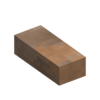
|
❌ | 
|
Cupronickel | ❌ | Alloy | ❌ | Copper: 65 - 75 % Nickel: 25 - 35% |
Copper: 13 - 15 Nickel: 5 - 7 |
1171 °C | Jonas assemblies, ingots, nails and strips |
Uncastable Metals
These metals can be found within the game’s asset library or in game, but cannot currently be smelted, cast, and/or worked.
| Ingot | Nugget | Bits | Metal | Geologic Name | Metal Type | Tier | Alloy% | % Conversion in nuggets |
Smelting Temperature | Casting Uses |
|---|---|---|---|---|---|---|---|---|---|---|
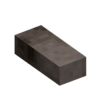
|
   
|

|
Żelazo | Hematite Limonite Magnetite |
Pure | 4 | ❌ | ❌ | 1482°C | ❌ |
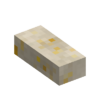
|

|

|
Meteoric Iron | ❌ | Pure | 4 | ❌ | ❌ | 1476°C | ❌ |
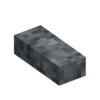 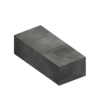
|
❌ |  
|
Steel | ❌ | Pure | 5 | ❌ | ❌ | 1602°C 1502°C |
❌ |
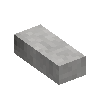
|

|

|
Chromium | Chromite | ❌ | ❌ | ❌ | ❌ | 1907°C | ❌ |
| ❌ | 
|
❌ | Manganese | Rhodochrosite | ❌ | ❌ | ❌ | ❌ | ❌ | ❌ |
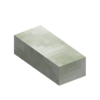
|

|

|
Nickel | Pentlandite | Pure | ❌ | ❌ | ❌ | 1455 °C | ❌ |
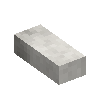
|
❌ | 
|
Platinum | ❌ | ❌ | ❌ | ❌ | ❌ | 1770°C | ❌ |
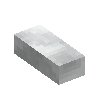
|
❌ | 
|
Rhodium | ❌ | ❌ | ❌ | ❌ | ❌ | ❌ | ❌ |
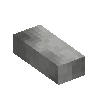
|
❌ | 
|
Stainless Steel | ❌ | ❌ | ❌ | ❌ | ❌ | ❌ | ❌ |
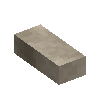
|

|

|
Titanium | Ilmenite | ❌ | ❌ | ❌ | ❌ | 1668°C | ❌ |
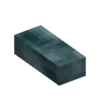
|

|

|
Uranium | Uranium | ❌ | ❌ | ❌ | ❌ | ❌ | ❌ |
| ❌ | 
|
❌ | Tungsten | Wolframite | ❌ | ❌ | ❌ | ❌ | ❌ | ❌ |
Casting Tutorial Videos
| Ores, metals and minerals | |
|---|---|
| Guides | Ore Deposits • Metals |
| Metals | Copper • Iron • Meteoric iron • Gold • Silver • Lead • Tin • Zinc • Bismuth • Titanium (Ilmenite) • Nickel |
| Alloys | Bronze (Tin bronze, bismuth bronze, black bronze) • Steel • Brass • Solder (Lead solder, Silver solder) • Molybdochalkos • Cupronickel • Electrum |
| Minerals | Alum • Borax • Cinnabar • Coal • Halite (Salt) • Lapis lazuli • Quartz • Saltpeter • Sulfur • Sylvite (Potash) |
| Tools | Pickaxe • Hammer • Prospecting Pick • Crucible • Forge • Ore blasting bomb • Quern • Anvil • Bloomery • Helve hammer • Pulverizer |
| Other | Gemstones |
| Related mechanics | Panning • Mining • Clay forming • Casting • Smithing • Steel making |
| Wiki Navigation | |
|---|---|
| Vintage Story | Guides • Frequently Asked Questions • Soundtrack • Versions • Controls |
| Game systems | Crafting • Knapping • Clay forming • Smithing • Cooking • Temperature • Hunger • Mining • Temporal stability • Mechanical power • Trading • Farming • Animal husbandry |
| World | World generation • Biomes • Weather • Temporal storms |
| Items | Tools • Weapons • Armor • Clothing • Bags • Materials • Food |
| Blocks | Terrain • Plants • Decorative • Lighting • Functional • Ore |
| Entities | Hostile entities • Animals • NPCs • Players |
| Miscellaneous | List of client commands • List of server commands • Creative Starter Guide • Bot System • WorldEdit • Cinematic Camera • Adjustable FPS Video Recording • ServerBlockTicking |
